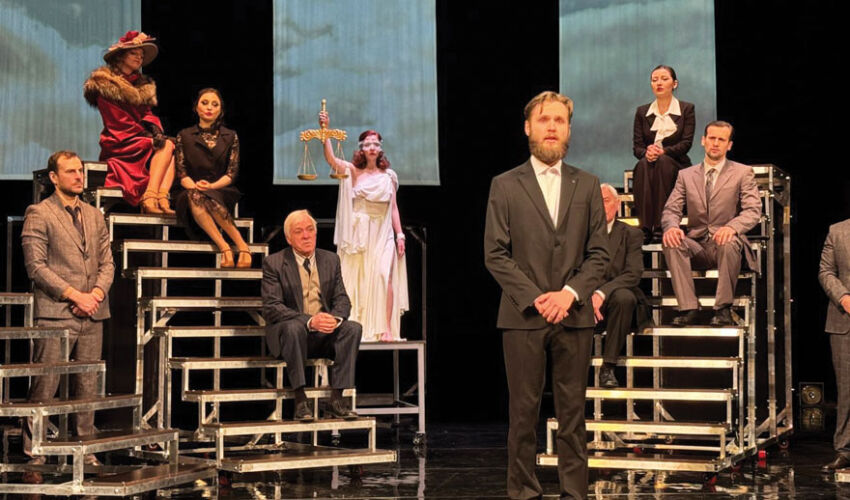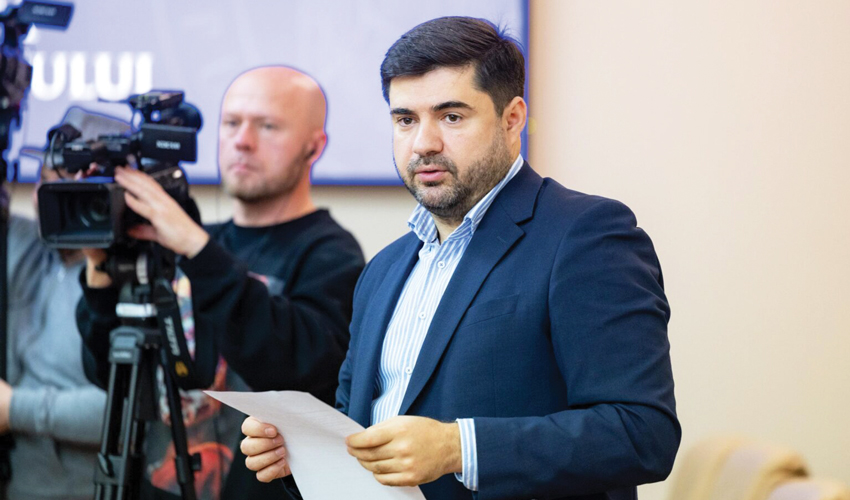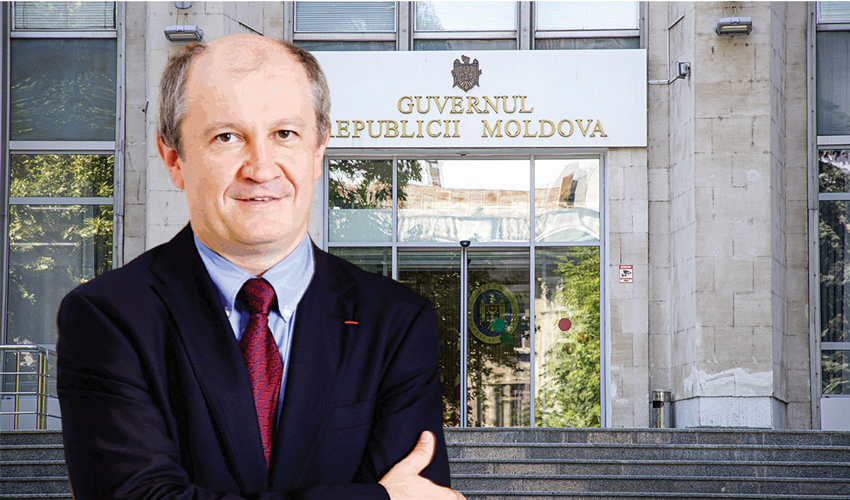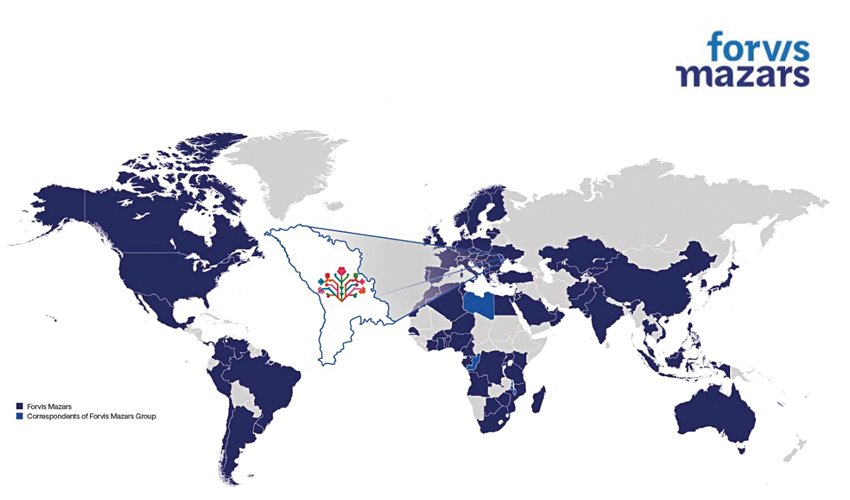
A scene from "The Trial"
“The artistic director of the theater Vera Maryanchik thought of creating a non-verbal performance with a minimum amount of text in the theater, so that the audience, even without knowing the language, only through movements and plasticity could understand what the story is about,” says Victoria Akimova-Krudu, literary secretary of the theater. – For his part, Oleg Mardar, a stage movement teacher at the Academy of Music, Theater and Fine Arts, had long aspired to stage something like this, and had been dreaming of Kafka for several years. Their desires coincided. This is not the first time Oleg has collaborated with the Chekhov Theater, he has staged stage movement in several productions, he knows the actors, he understands how our mechanisms work”.
In 1999, the French edition of Le Monde included “The Process” in the list of 100 best works of the XX century, putting it in third place. The novel tells the story of how a man falls into the net of the judicial system and bureaucracy, not understanding why, because he committed no crime. And tries to fight the bureaucratic machine, which tosses him from side to side.
“I think that in the novel Kafka described his relationship with the world of people around him, his family, his women, with whom he did not have everything worked out, – believes the literary secretary. – And each spectator can decide for himself what the play is about. Despite the fact that it has justice, lawyers, judges – it does not mean that “The Trial” is about the judicial system. It is an allegorical decision: to tell about what can happen to every person, he or she can be cornered by justice, the state, close people, etc.”.
A plastic performance is a great responsibility in conveying emotion to the audience. “If in a regular production the actor says, ‘He offended me,’ the viewer understands everything. But here you have to show with your body, movement, gestures that the person offended you, – explains Victoria Akimova-Krudu. – And that the viewer understood, felt what emotion at this moment is transmitted by the actor. That’s why for our guys working on the performance was a great challenge. The plastic solution obliges the actors to be as focused as possible, concentrated on what is happening on stage”.
The cast is mostly young, the performance directly “breathes” young energy. Artem Goncharov, Yakov Gribinenko, Irina Tarasyuk, Anna Goryachka, Inna Khonenko, Yana Lazar, Maria Batyrmurzaeva and other actors are involved in it.
A “prefabricated” team united by a common idea worked on “The Process”. The scenography is by Adrian Suruceanu. “To the viewer the scenography seems simple, but in fact it is incredibly complex,” says our interlocutor. – The actors themselves rebuild the set, so they have a double load, in addition to the role. You have to climb up and down all the structures, everything looks easy and effortless, and this is also a sign of great skill of our guys”.
With costume designer Inga Botnaryuk the theater cooperates for the second time, she created the costumes for “The Nutcracker”. Inga has a fine sense of the era, the task, and the mood that needs to be conveyed to this or that character.
For the first time the Chekhov Theater worked with composer Valentin Strishkov. Music occupies a special place in the play, because there is very little text, and through music it was necessary to convey feelings, emotions, mood….
“Franz Kafka’s novel can be called a psychological thriller, there are many absurd situations in it, and the material itself allows us to work in the sphere of plastic expression,” comments director Oleg Mardar, the author of the plastic choreography. – Initially I envisioned a small text in the performance, because dramatic actors, of course, work in plasticity, but they have their own specificity of expression. And I wanted them to feel comfortable knowing that they could rely on the words. I chose the techniques of expressiveness that actors are taught back at the institute”.
As a stage movement specialist, Oleg Mardari has been working for several years with many Moldovan theaters, including the National Theater named after M. Eminescu and the National Theater named after E. Ionesco.
His comprehension of art began in the fifth grade at the E. Alistar Theoretical Lyceum in Chisinau. He entered the Academy of Music, Theater and Fine Arts, but not for directing, as he wanted, but for puppeteering. An unexpected turn happened after communicating with Victor Stefaniuc , head of the Municipal Puppet Theater “Gugutse”, his future teacher. “He convinced me that puppetry was exactly what I needed, and I have never regretted it. Puppetry training an actor develops discipline, integrity, teaches the student to love not himself in the profession, but the profession in himself, which is very important. Puppet craft has developed in me a rich imagination, imaginative thinking, some improvisational qualities, where you need to make decisions very quickly. The specificity of puppet theater is based on ingenuity, uncommon thinking”.
In the puppet class there were disciplines “stage movement” and “rhythmics”, which Oleg liked. He even created etudes or numbers on plastic expressiveness not only for himself, but also for his colleagues. At the suggestion of stage movement teacher Nikolai Kazmin, Oleg completed his postgraduate studies and began teaching at the Academy of Music, Theater and Fine Arts.
Nikolai Kazmin took the teachers to seminars on stage movement several times to Andrei Droznin, professor and head of the Department of Plastic Expression of the Actor at the B. Shchukin Theater Institute. “At the seminars I got acquainted with the teacher of the discipline of “rhythmics” Elena Druzhnikova, her open class changed my ideas and allowed me to think about the form of expressiveness through rhythmics, – says Oleg Mardar. – And I started to develop this discipline at the Academy of Music, Theater and Fine Arts”.













